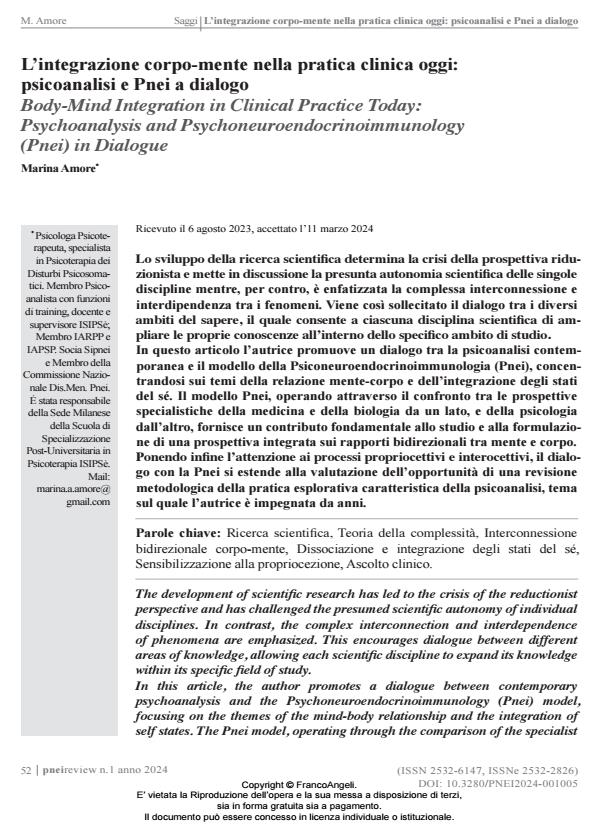Body-Mind Integration in Clinical Practice Today: Psychoanalysis and Psychoneuroendocrinoimmunology (Pnei) in Dialogue
Journal title PNEI REVIEW
Author/s Marina Amore
Publishing Year 2024 Issue 2024/1
Language Italian Pages 16 P. 52-67 File size 1156 KB
DOI 10.3280/PNEI2024-001005
DOI is like a bar code for intellectual property: to have more infomation
click here
Below, you can see the article first page
If you want to buy this article in PDF format, you can do it, following the instructions to buy download credits

FrancoAngeli is member of Publishers International Linking Association, Inc (PILA), a not-for-profit association which run the CrossRef service enabling links to and from online scholarly content.
The development of scientific research has led to the crisis of the reductionist perspective and has challenged the presumed scientific autonomy of individual disciplines. In contrast, the complex interconnection and interdependence of phenomena are emphasized. This encourages dialogue between different areas of knowledge, allowing each scientific discipline to expand its knowledge within its specific field of study. In this article, the author promotes a dialogue between contemporary psychoanalysis and the Psychoneuroendocrinoimmunology (Pnei) model, focusing on the themes of the mind-body relationship and the integration of self states. The Pnei model, operating through the comparison of the specialist perspectives of medicine and biology on the one hand, and psychology on the other, provides a fundamental contribution to the study and formulation of an integrated perspective on the bidirectional relationship between mind and body. Finally, by focusing on proprioceptive and interoceptive processes, the dialogue with Pnei extends to the evaluation of the opportunity for a methodological revision of the exploratory practice characteristic of psychoanalysis, a topic on which the author has been working for years.
Keywords: Parental Styles, Oxytocin affiliation system, Dopamine reward system, Glucocorticoids stress axis, Early Life Stress, Dysfunctional Parenting.
Marina Amore, L’integrazione corpo-mente nella pratica clinica oggi: psicoanalisi e Pnei a dialogo in "PNEI REVIEW" 1/2024, pp 52-67, DOI: 10.3280/PNEI2024-001005